Table of Contents
Introduction
“Ever wished there were more hours in a day?
We all have experienced frustration when time slips away, leaving us with unfinished tasks and unfulfilled goals.
But what if we could make the most out of every minute, mastering the art of optimizing idle and productive time?
This blog post unveils 16 tips to help you get maximum value from your downtime while skyrocketing your productivity to new heights.
So without any further ado, let’s get started.
Understanding Idle vs. Productive Time
Idle time refers to periods when an individual is not engaged in productive or meaningful tasks.
It is often considered unproductive or wasted time because it does not contribute to achieving goals or generating value.
During idle time, individuals may be idle for various reasons, such as:
- Distractions
- Procrastination
- Lack of focus
On the other hand, productive time is when individuals are actively engaged in tasks that contribute to their goals, responsibilities, or desired outcomes.
Productive time involves activities that have a purpose, generate value, and move individuals closer to their objectives. It can include:
- Working on projects
- Attending meetings
- Learning new skills
- Problem-solving
- Completing assignments
How Is Idle Time Vs Productive Time Calculated?
Idle time vs. productive time is typically calculated by analyzing the time spent on tasks that contribute to meaningful work versus the time spent on unproductive or non-work-related activities.
Let’s consider an example to understand how it can be calculated:
Example:
Sarah works as a content writer. She tracks her time during her workday using a productivity tool like Workstatus.
Here’s a breakdown of her activities and the corresponding time spent:
- Writing a blog post: 2 hours
- Researching for a new project: 1 hour
- Checking emails and responding to messages: 30 minutes
- Taking a coffee break: 15 minutes
- Surfing social media unrelated to work: 45 minutes
- Attending a team meeting: 1 hour
To calculate the idle time and productive time, we need to determine which activities are considered productive and which are considered idle or unproductive:
Productive Time:
- Writing a blog post: 2 hours
- Researching for a new project: 1 hour
- Attending a team meeting: 1 hour
- Total productive time: 2 hours + 1 hour + 1 hour = 4 hours
Idle Time:
- Checking emails and responding to messages: 30 minutes
- Taking a coffee break: 15 minutes
- Surfing social media unrelated to work: 45 minutes
- Total idle time: 30 minutes + 15 minutes + 45 minutes = 1 hour 30 minutes
In this example, Sarah had 4 hrs. of productive time & 1 hour 30 minutes of idle time during her workday.
By calculating the ratio between productive time & total time worked, you can determine the percentage of idle time versus productive time.
In this case, if Sarah worked 6 hours, her idle time would be 25% (1.5 hours), and her productive time would be 66.67% (4 hours).
This calculation helps individuals and teams identify how much of their time is spent on meaningful work and how much is potentially wasted or unproductive. It enables them to:
- Make adjustments
- Improve time management
- Increase overall productivity by reducing idle time
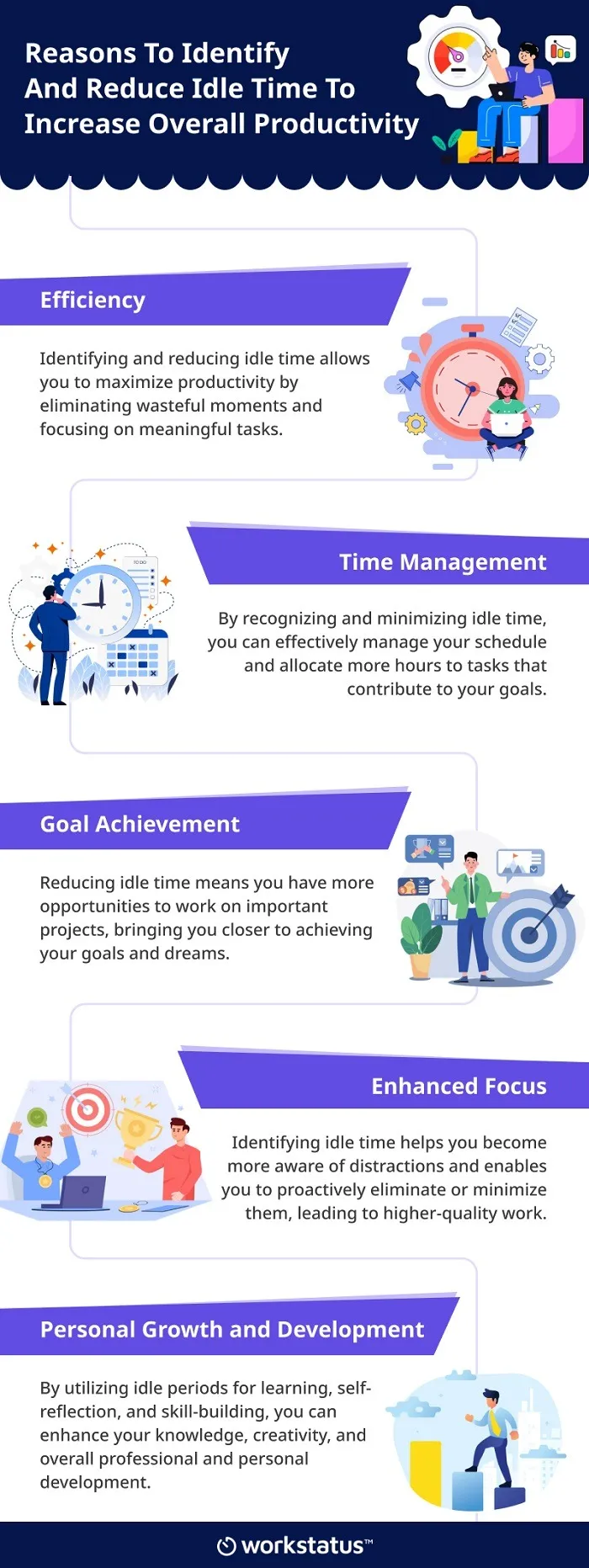
As we have understood why it is important to identify and reduce idle time, let’s look at some tips that could help maximize productive time.
Tip 1: Set clear goals and priorities
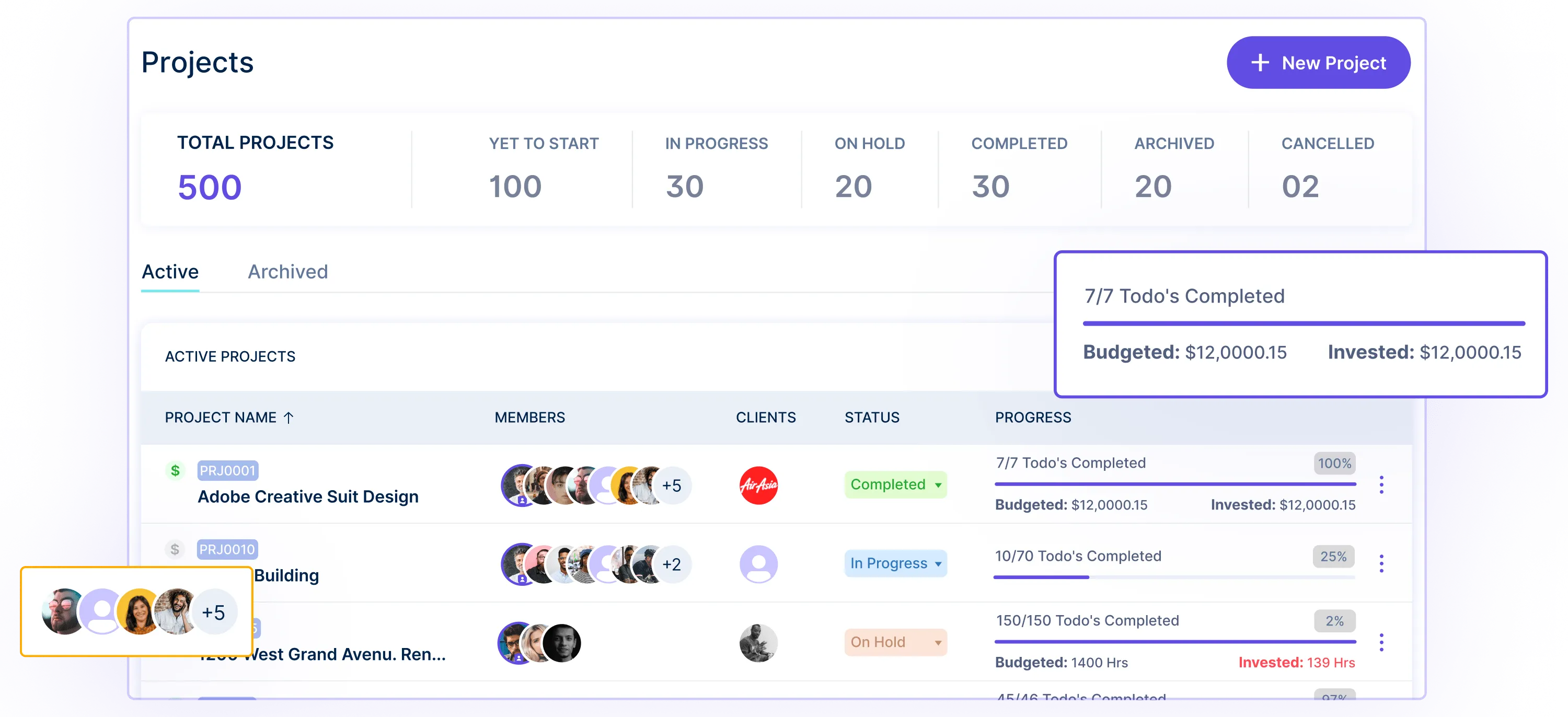
Setting clear goals & priorities is crucial for maximizing productivity.
When you clearly understand what needs to be accomplished, you can focus your time & energy on the most important tasks. Use a project management feature to:
- Define your goals
- Break them down into smaller tasks
- Assign priorities to each task
This will help you stay organized and ensure you’re working on the right things at the right time.
Tip 2: Plan and schedule your time
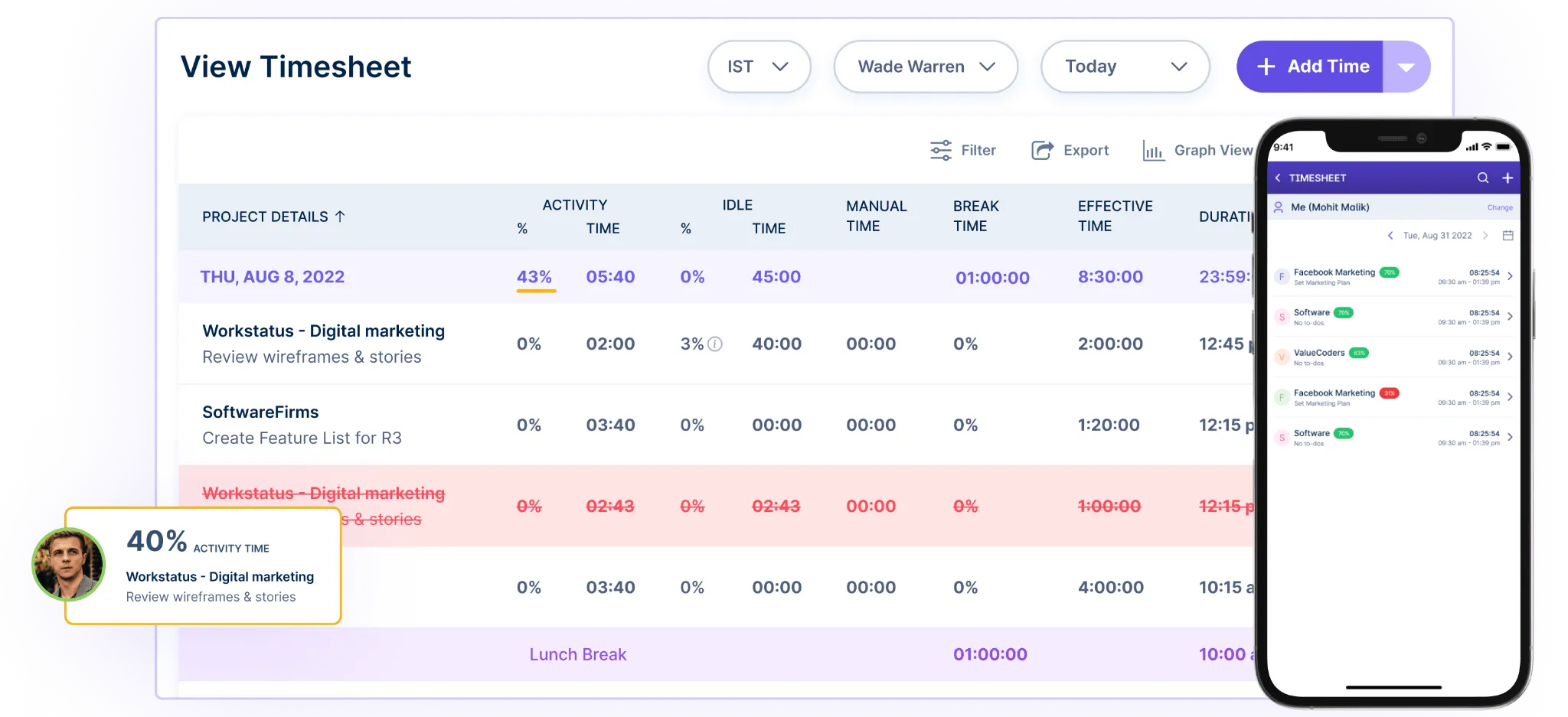
Planning and scheduling your time effectively can significantly boost your productivity. Use a time-tracking feature to analyze how you currently spend your time.
Identify tasks that consume the most time without significant value and find ways to optimize or delegate them.
Create a daily or weekly schedule that allocates specific time blocks for activities, including work-related tasks and personal commitments.
This helps you stay on track and allocate sufficient time for productive work and relaxation.
Tip 3: Break-down tasks into smaller, manageable chunks
Large, complex tasks can be overwhelming and lead to procrastination. To maximize your time, break down such tasks into smaller, more manageable chunks.
This approach allows you to tackle each subtask with focus and clarity, making progress steadily. Breaking tasks down also enables better time estimation, as you can allocate realistic timeframes to each subtask.
By completing smaller tasks, you gain a sense of accomplishment and motivation, which helps maintain productivity.
Tip 4: Use time-blocking techniques
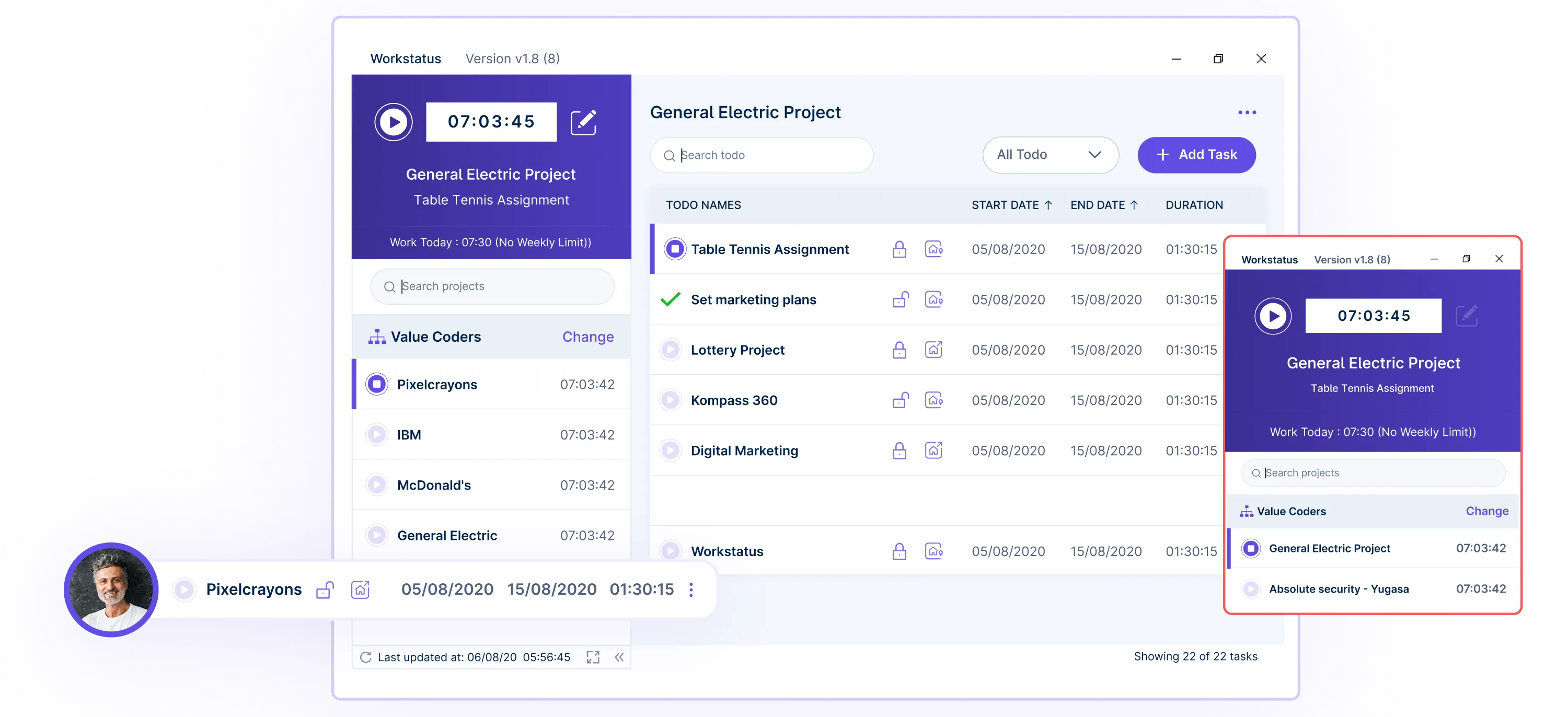
Time-blocking is a technique where you assign specific time blocks for different activities or categories of tasks. This helps in maintaining focus and avoiding distractions.
Utilize a time tracking feature to allocate time blocks for productive work and leisure activities.
By setting aside dedicated time for relaxation and self-care, you can prevent burnout and maintain a healthy work-life balance. Time-blocking also helps ensure that all important tasks receive sufficient attention and are not neglected.
Tip 5: Prioritize important and urgent tasks
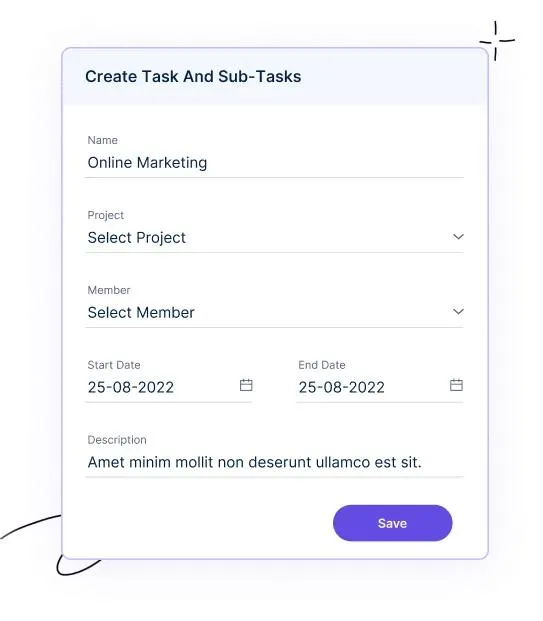 To maximize productivity, it’s crucial to prioritize tasks based on their importance & urgency. Use a task management system to categorize tasks into different levels of priority.
To maximize productivity, it’s crucial to prioritize tasks based on their importance & urgency. Use a task management system to categorize tasks into different levels of priority.
Identify tasks that are both important and urgent and tackle them first.
This ensures that critical work is completed promptly, minimizing the risk of missing deadlines or important deliverables. You can allocate your time and energy more effectively by focusing on high-priority tasks.
Tip 6: Delegate tasks whenever possible
Delegating tasks can help you optimize your time and productivity. Identify tasks that can be effectively handled by others and delegate them accordingly.
Use a project management feature to assign tasks to team members, set deadlines, and track progress.
Delegating frees your time to focus on more critical responsibilities and promotes teamwork and collaboration.
It allows you to leverage the strengths and expertise of others, leading to improved efficiency and better outcomes.
Tip 7: Keep a check on your activities
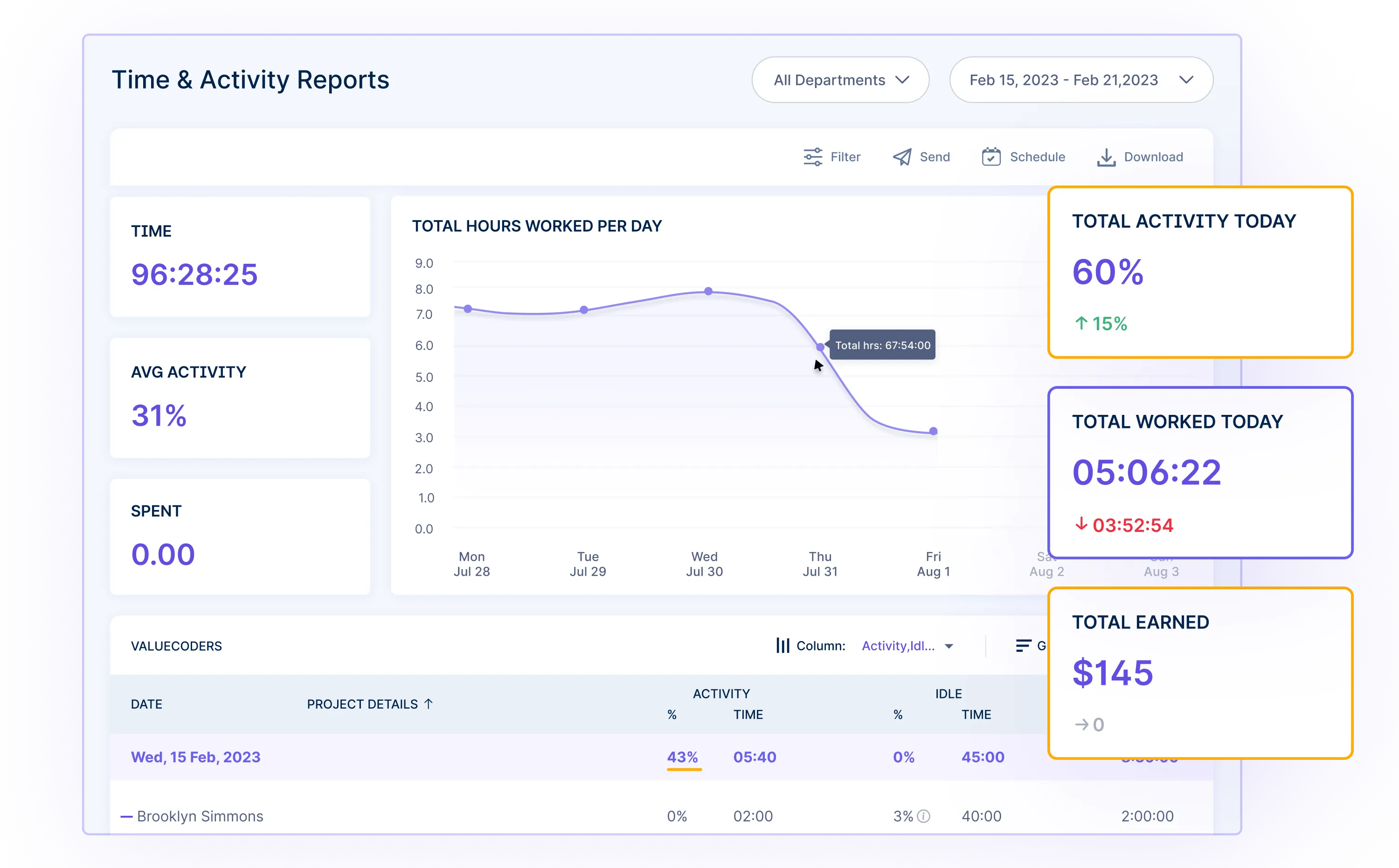
Tracking your activities can provide valuable insights into how you spend your time and identify areas where improvements can be made.
An employee activity tracking feature helps monitor your work habits, such as time spent on specific:
- Tasks
- Breaks
- Distractions
By reviewing these activity logs, you can identify time-consuming activities or habits that hinder productivity.
This awareness allows you to adjust, eliminate time-wasting activities, and maintain a more focused and productive workflow.
Tip 8: Use productivity tools & apps
Utilizing productivity tools and apps can greatly enhance your efficiency and time management. Workstatus productivity tracking features help you:
- Stay organized
- Manage tasks
- Set reminders
- Track progress
These tools often offer to-do lists, calendar integration, goal setting, and progress tracking features.
By leveraging these tools, you can streamline your workflow, stay on top of deadlines, & ensure that you’re progressing toward your goals.
Tip 9: Monitor your time
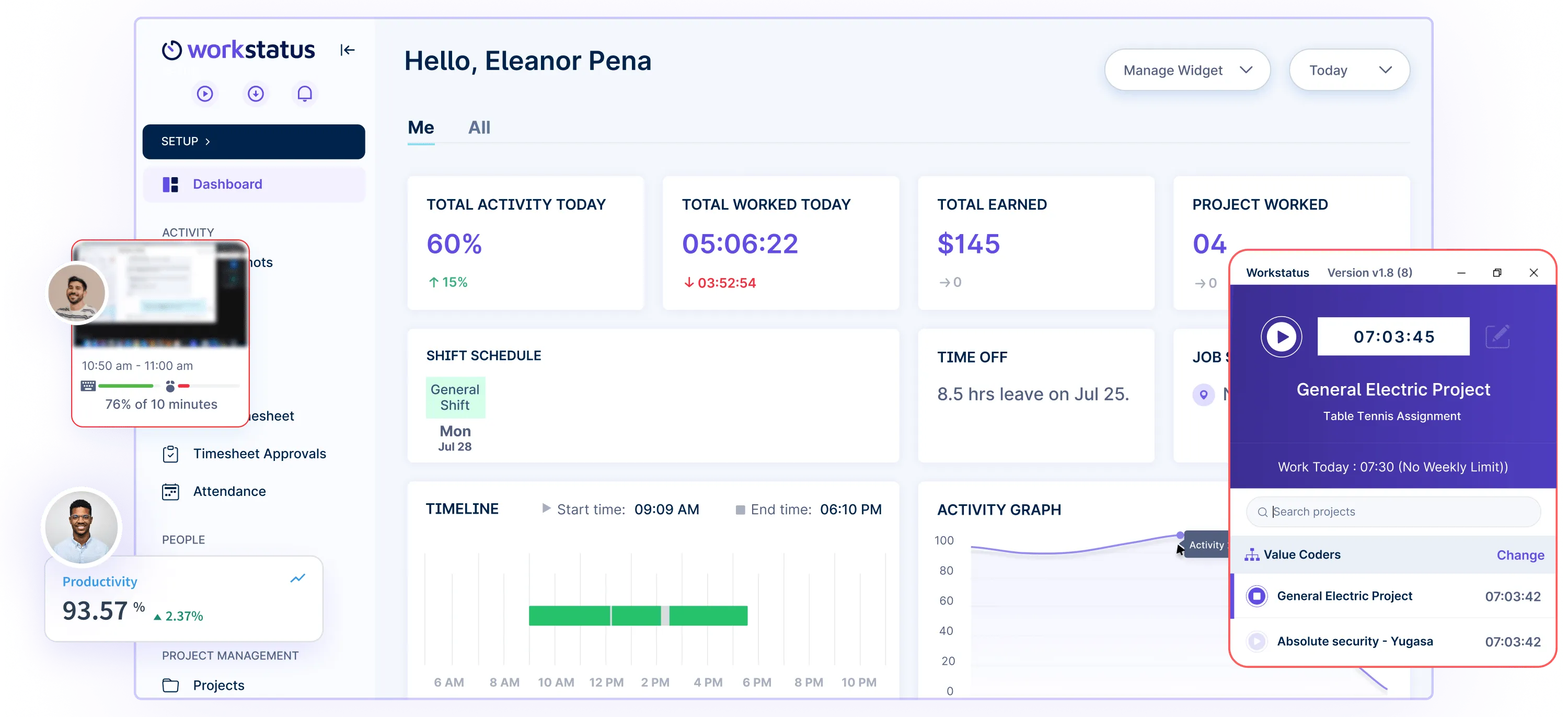 Time monitoring is essential for understanding how you spend your day and identifying areas for improvement.
Time monitoring is essential for understanding how you spend your day and identifying areas for improvement.
An automatic time tracker feature can help you track your time on various tasks and activities without manual input.
It captures data in the background, providing accurate insights into your time usage patterns.
By reviewing these time logs regularly, you can identify potential time-wasting activities, distractions, or inefficient processes, allowing you to make necessary adjustments.
Tip 10: Avoid multitasking
Contrary to popular belief, multitasking can be counterproductive. Switching between tasks frequently can lead to:
- Loss of focus
- Increased errors
- Reduced productivity
Instead, focus on one task at a time and give it your full attention. Complete or progress significantly on one task before moving on to the next.
This approach allows you to maintain concentration, work more efficiently, and produce higher-quality outcomes. By avoiding multitasking, you can optimize your time and energy utilization.
Tip 11: Automate time-consuming activities
 Automating time-consuming activities can save you valuable time and improve productivity.
Automating time-consuming activities can save you valuable time and improve productivity.
Utilize tools like Workstatus that streamline mundane workforce management tasks with automation features. These tasks may include:
- Timesheet management
- Employee scheduling
- Task assignment
- Performance tracking
By automating these activities, you can reduce manual effort, minimize errors, and free up time to focus on more strategic and value-added work.
Tip 12: Optimize your schedule for productivity
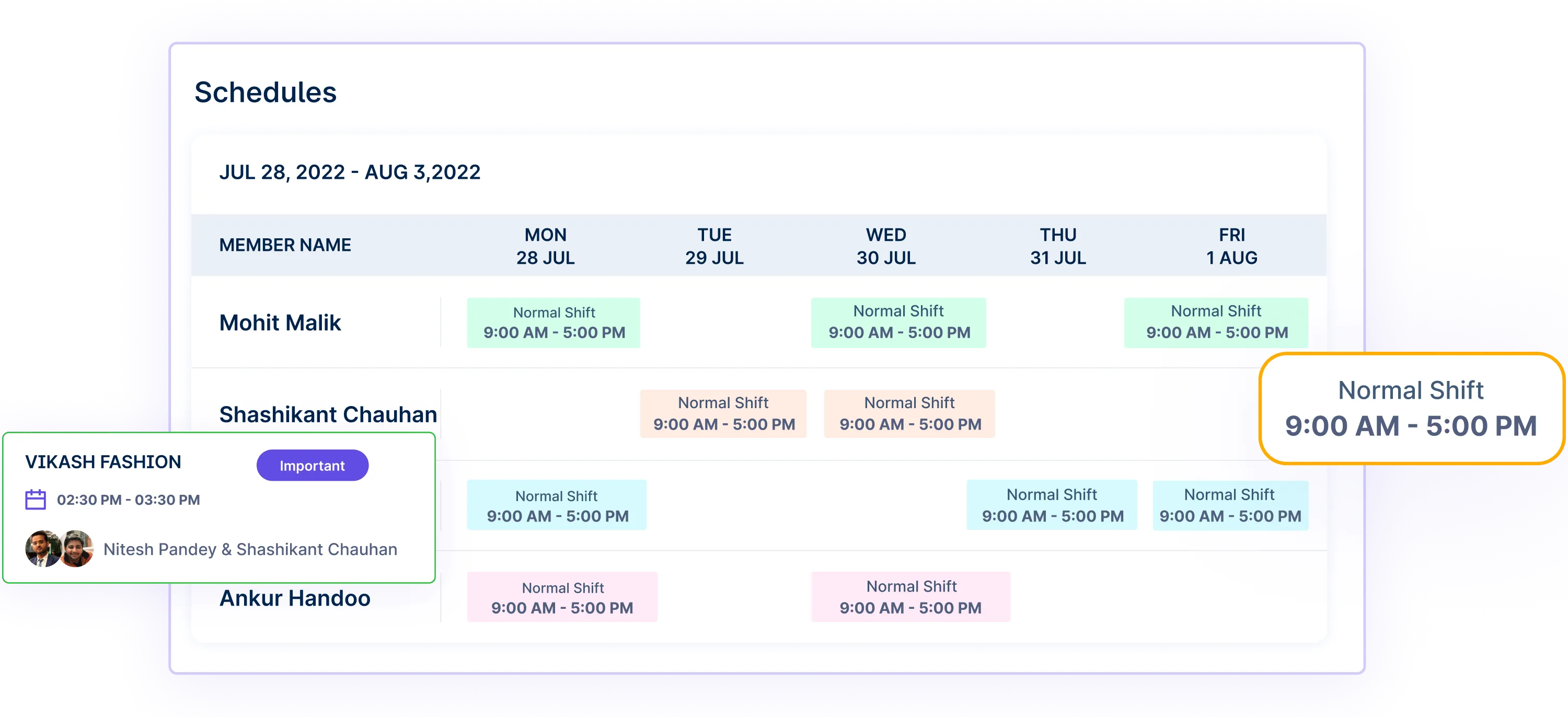 Optimizing your schedule is essential for maximizing productivity. Use a scheduling feature, such as those provided by productivity tools or calendar apps, to efficiently plan and organize your day.
Optimizing your schedule is essential for maximizing productivity. Use a scheduling feature, such as those provided by productivity tools or calendar apps, to efficiently plan and organize your day.
Consider your energy levels and natural rhythms when scheduling tasks. Allocate your most productive hours to high-priority or complex tasks that require concentration.
Schedule less demanding or routine tasks for times when your energy naturally dips. This optimization ensures you maximize your productive periods and maintain a consistent output level.
Tip 13: Practice effective collaboration

Effective collaboration is crucial for optimizing productivity. Use AI dashboards or collaborative platforms to facilitate communication, file sharing, and project management.
These tools enable seamless collaboration, allowing team members to collaborate efficiently, share updates, and provide real-time feedback. By practicing effective collaboration, you can:
- Avoid miscommunication
- Reduce unnecessary back-and-forth
- Ensure everyone is aligned towards shared goals
Tip 14: Cultivate work-life balance
Maintaining a positive work-life balance is vital for long-term productivity and well-being. Set boundaries between work and personal life, and prioritize self-care and leisure activities.
Take regular breaks during work hours to recharge and avoid burnout. Create a supportive work environment that promotes work-life balance, such as flexible working hours or remote work options.
By cultivating a positive work-life balance, you can enhance your overall satisfaction, motivation, and, ultimately, your productivity.
Tip 15: Regularly review and adjust your workflow
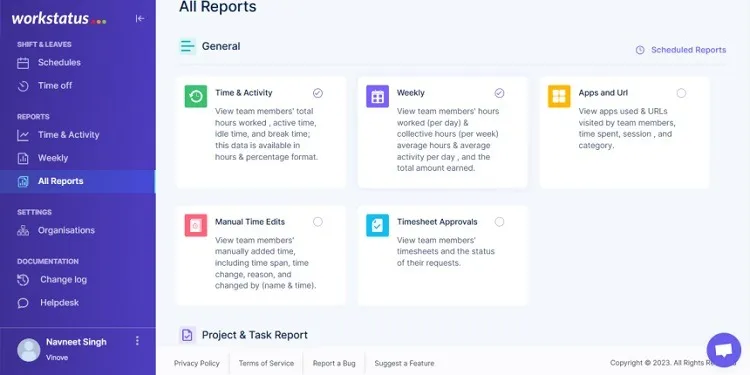 Periodically reviewing and adjusting your workflow is essential for ongoing improvement. Utilize AI reports or analytics tools to:
Periodically reviewing and adjusting your workflow is essential for ongoing improvement. Utilize AI reports or analytics tools to:
- Gain insights into your work patterns
- Identify bottlenecks
- Assess your productivity levels
Analyze the data to determine areas where you can make adjustments, optimize processes, or adopt new strategies.
Regularly reviewing your workflow allows you to stay adaptable, identify areas for improvement, and make informed decisions to enhance your overall productivity.
Tip 16: Celebrate achievements
Celebrating achievements, no matter how small, is crucial for maintaining motivation and boosting productivity.
Acknowledge and reward yourself and your team for reaching milestones, completing projects, or achieving goals.
Celebrations can take various forms, such as team outings, recognition programs, or simple acknowledgments.
Celebrating achievements fosters a positive and motivating work environment, increasing morale, engagement, and productivity.
So these were the 16 tips we discussed for optimizing idle vs. productive time. Following these strategies can maximize each moment and optimize your productivity.
However, looking for all the above features in one tool can be tedious, so we recommend Workstatus.
With Workstatus, you can do everything you need to measure and manage your Optimizing Idle vs. Productive Time.
Workstatus is a comprehensive productivity and workforce management tool designed to help individuals and teams optimize their time and achieve their goals efficiently.
Its powerful features and user-friendly interface, Workstatus enable users to track, analyze, and manage their work activities effectively. Whether you’re a:
- Freelancer
- Project manager
- Business owner
Workstatus can be your one-stop solution for all your workflow optimization needs.
Next step
Optimizing idle vs. productive time is a crucial aspect of achieving personal and professional success.
Tips discussed in this blog can help maximize idle moments and enhance productivity. Remember to prioritize self-care, set realistic goals, eliminate distractions, and leverage technology to streamline your tasks.
Speaking of leveraging technology, one tool that can greatly assist you in managing your time effectively is Workstatus.
With its advanced features and intuitive interface, Workstatus allows you to maximize your idle moments and power your productivity.
So what are you waiting for?












